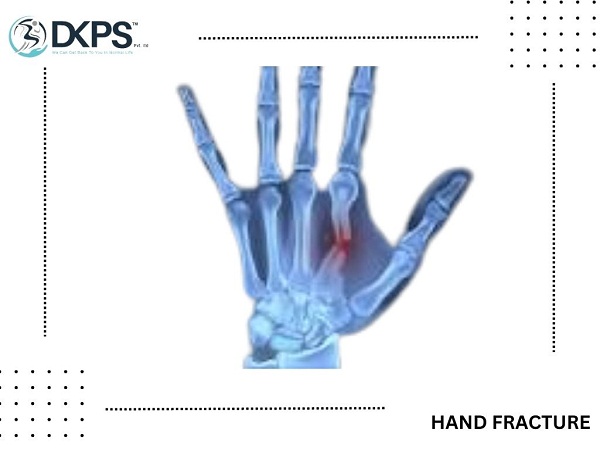- Home
- About Us
- DKPS Dealing
- BLOG
- Delhi NCR
- Delhi
- Physiotherapy at Home Near Me | Physiotherapist in South Delhi
- Best Chiropractor in Delhi
- Physiotherapist in Delhi
- Cupping Therapy in Delhi
- Home Nursing Services in Delhi
- Needle Therapy for Back Pain
- Sports Injury Physiotherapy
- Best Physiotherapist Visit at Home in Rohini Sector 24
- Physiotherapy at Home In Rohini Sector 9 |
- Physiotherapist in Pitampura | Physiotherapy at Home in Pitampura
- Physiotherapy at home in Rohini sector 29
- Physiotherapist in Paschim Vihar
- Physio home visit | Home Visit Physiotherapy |
- Physiotherapist in Saket | Best Physiotherapist in Saket |
- Physiotherapist In Janakpuri | Best Physiotherapist in Janakpuri |
- Best Physiotherapist in Punjabi Bagh | Punjabi Bagh Physiotherapist |
- Best Physiotherapist Service at Home in Dwarka, Delhi
- Best Physiotherapist in Chandigarh at Home Visit
- Faridabad
- Gurugram
- Noida
- Best Physiotherapy Gorakhpur
- Best Physiotherapist in Lucknow | Physiotherapist in Lucknow near me |
- Delhi
- Mumbai
- Delhi NCR
- Department
- Doctors
- Gallery
- Packages
- Contact Us
- Home
- About Us
- DKPS Dealing
- BLOG
- Delhi NCR
- Delhi
- Physiotherapy at Home Near Me | Physiotherapist in South Delhi
- Best Chiropractor in Delhi
- Physiotherapist in Delhi
- Cupping Therapy in Delhi
- Home Nursing Services in Delhi
- Needle Therapy for Back Pain
- Sports Injury Physiotherapy
- Best Physiotherapist Visit at Home in Rohini Sector 24
- Physiotherapy at Home In Rohini Sector 9 |
- Physiotherapist in Pitampura | Physiotherapy at Home in Pitampura
- Physiotherapy at home in Rohini sector 29
- Physiotherapist in Paschim Vihar
- Physio home visit | Home Visit Physiotherapy |
- Physiotherapist in Saket | Best Physiotherapist in Saket |
- Physiotherapist In Janakpuri | Best Physiotherapist in Janakpuri |
- Best Physiotherapist in Punjabi Bagh | Punjabi Bagh Physiotherapist |
- Best Physiotherapist Service at Home in Dwarka, Delhi
- Best Physiotherapist in Chandigarh at Home Visit
- Faridabad
- Gurugram
- Noida
- Best Physiotherapy Gorakhpur
- Best Physiotherapist in Lucknow | Physiotherapist in Lucknow near me |
- Delhi
- Mumbai
- Delhi NCR
- Department
- Doctors
- Gallery
- Packages
- Contact Us
Hand Fracture
- Home
- Hand Fracture

Hand Fracture -
Hand fractures are a common injury that can happen to anyone, regardless of age or occupation. They can be caused by a variety of things, including falls, sports injuries, car accidents, or even just a hard hit to the hand. While most hand fractures are not life-threatening, they can cause significant pain and discomfort and may require medical treatment to fully heal.
In this article, we will explore the different types of hand fractures, their symptoms, and treatment options, as well as some exercises and activities that can help with recovery.
Types of Hand Fractures–
Hand fractures can occur in any of the 27 bones that make up the human hand. However, some bones are more commonly fractured than others. The most common types of hand fractures include:
Fractures of the metacarpals:
These are the long bones that connect the wrist to the fingers. Fractures of the metacarpals are often caused by direct trauma to the hand, such as a punch or a fall.
Fractures of the phalanges:
These are the bones that make up the fingers. Fractures of the phalanges can be caused by a variety of things, including crushing injuries, falls, or getting a finger caught in a door.
Fractures of the scaphoid:
This is a small bone located near the base of the thumb. Fractures of the scaphoid are common in sports that involve falls onto an outstretched hand, such as snowboarding or skateboarding.
Symptoms of Hand Fractures-
The symptoms of a hand fracture can vary depending on the location and severity of the injury. Some common symptoms include:
Pain:
Pain is often the first symptom of a hand fracture. The pain may be mild or severe and may increase with movement.
Swelling:
Swelling is a common symptom of a hand fracture. The affected area may become red, warm, and tender to the touch.
Stiffness:
Stiffness is common after a hand fracture. The affected area may be difficult to move and may feel tight or uncomfortable.
Deformity:
A hand fracture may cause the affected area to appear deformed or misshapen. This is more common in severe fractures.
Numbness or tingling:
In some cases, a hand fracture may cause numbness or tingling in the affected area. This is usually a sign of nerve damage.
Treatment Options for Hand Fractures-
The treatment for a hand fracture will depend on the type and severity of the injury. Some common treatment options include:
Immobilization:
Immobilizing the affected area can help promote healing and prevent further damage. This may involve wearing a cast or splint or using a special brace.
Surgery:
In some cases, surgery may be necessary to repair a severe hand fracture. This may involve using pins, screws, or plates to hold the bones in place.
Physical therapy:
Physical therapy can be helpful after a hand fracture to improve range of motion, strength, and flexibility. This may involve exercises to stretch and strengthen the hand and wrist.
Pain management:
Pain management is an important part of treating a hand fracture. This may involve over-the-counter pain relievers, prescription medication, or other pain management techniques.
Rest and recovery:
Rest and recovery are crucial for healing after a hand fracture. It is important to avoid activities that may aggravate the injury and to give the affected area time to heal.
Exercises and Activities for Hand Fracture Recovery-
After a hand fracture, it is important to work with a healthcare professional to develop a safe and effective recovery plan. This may include exercises and activities to help promote healing and improve the range of motion, strength, and flexibility in the hand and wrist. Here are some exercises and activities that may be helpful for hand fracture recovery:
Range of motion exercises:
Range of motion exercises can help improve flexibility in the hand and wrist. These may include finger curls, wrist rotations, and finger extensions.
Grip strengthening exercises:
Grip strengthening exercises can help improve hand and wrist strength. These may include squeezing a stress ball, using hand grippers, or doing finger extensions with a rubber band.
Stretching exercises:
Stretching exercises can help improve flexibility in the hand and wrist. These may include wrist flexor stretches, wrist extensor stretches, and finger stretches.
Hand therapy:
Hand therapy is a specialized form of physical therapy that focuses on the hand and wrist. A hand therapist can work with you to develop a customized treatment plan that includes exercises and activities to promote healing and improve function.
Low-impact activities:
Low-impact activities, such as swimming or cycling, can be helpful for hand fracture recovery. These activities can improve cardiovascular health and promote healing without putting additional stress on the hand and wrist.
Avoid high-impact activities:
High-impact activities, such as running or contact sports, should be avoided until the hand fracture has fully healed. These activities can put additional stress on the hand and wrist and may delay healing or cause further damage.
Use adaptive equipment:
Adaptive equipment, such as a wrist brace or splint, can help support the hand and wrist during activities of daily living. This can help prevent further injury and promote healing.
It is important to work closely with a healthcare professional during hand fracture recovery. They can provide guidance on the most appropriate exercises and activities based on your individual needs and goals.
Prevention of Hand Fractures-
While not all hand fractures can be prevented, there are steps you can take to reduce your risk of injury. Some tips for preventing hand fractures include:
Wear protective gear:
If you participate in sports or other activities that put your hands at risk of injury, wear protective gear such as gloves, wrist guards, or padded sleeves.
Practice good hand hygiene:
Wash your hands regularly to prevent the spread of germs and reduce your risk of infections that can weaken bones.
Maintain strong bones:
Eat a diet rich in calcium and vitamin D, and engage in weight-bearing exercise to maintain strong bones and reduce your risk of fractures.
Avoid risky behaviors:
Avoid behaviors that can increase your risk of injury, such as drinking and driving, using drugs, or engaging in reckless activities.
Conclusion-
Hand fractures can be a painful and frustrating injury, but with proper treatment and rehabilitation, most people are able to fully recover. If you suspect you have a hand fracture, seek medical attention as soon as possible. With the right care and support, you can get back to doing the activities you love without pain or discomfort.
Hand fractures are a common injury that can occur from a variety of causes, including sports injuries, falls, and accidents. It is important to take steps to prevent hand fractures and to seek medical attention if you suspect you have a hand fracture.
Hand fractures can vary in severity and may require different types of treatment, including immobilization, surgery, and rehabilitation. Working closely with a healthcare professional can help ensure the best possible outcome.
If you have a hand fracture, it is important to follow your healthcare professional’s instructions carefully and to take steps to promote healing and prevent further injury. This may include exercises and activities to improve range of motion and strength, as well as the use of adaptive equipment.
Remember, prevention is key when it comes to hand fractures. Take steps to reduce your risk of injury, including wearing protective gear, practicing good hand hygiene, maintaining strong bones, and avoiding risky behaviors.
With proper care and attention, most people are able to fully recover from a hand fracture and resume their normal activities without pain or discomfort
How Drsinghphysiocare Can Help You:-
Drsinghphysiocare.com has very experienced physiotherapists well-versed in modern manual techniques and rehabilitation protocols. Moving patients from one place to another is complicated and can even increase the damage. Drsinghphysiocare.com offers physiotherapists home visits to rehabilitate patients in the comfort of their homes. Regular home physiotherapy by our physiotherapist helps patients actively and vigorously return to independence.
Senior physicians select our talented and experienced physiotherapists after they meet our strict recruitment standards. As a result of our higher standards and quality of service, many patients have recovered from the comfort of their homes and saved their valuable time and money.
For More Article-
Physiotherapy/ Chiropractor/Cupping therapy/Dry Needling therapy services available in –
Check Professionals details at location wise
